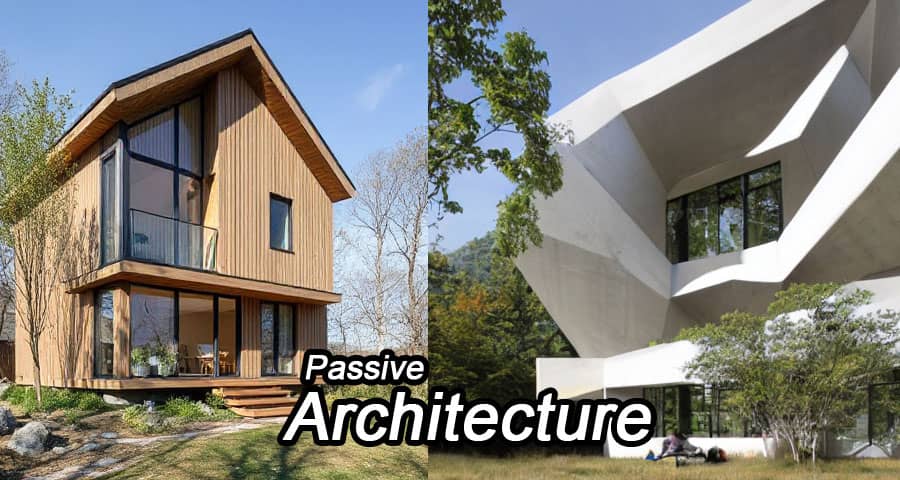The challenges of climate change and resource scarcity have brought sustainability to the forefront of architectural innovation. Passive architecture, an approach rooted in energy efficiency and environmental harmony, has emerged as a powerful strategy for creating sustainable structures.
What Is Passive Architecture?
Passive architecture refers to design strategies that maximize natural resources – such as sunlight, wind, and thermal mass—to reduce energy consumption. By minimizing reliance on mechanical systems, passive architecture creates buildings that are both environmentally friendly and cost-efficient.
Core Principles of Passive Architecture
- Orientation and Layout: Proper building orientation maximizes solar gain in colder months and minimizes overheating in warmer months.
- Thermal Mass: Materials like concrete, brick, and stone absorb and store heat during the day and release it at night, stabilizing indoor temperatures.
- Natural Ventilation: Harnessing wind patterns to ensure optimal air circulation reduces dependency on HVAC systems.
- Insulation: High-quality insulation minimizes heat transfer, maintaining comfortable indoor temperatures year-round.
- Shading and Glazing: Thoughtfully designed shading devices and energy-efficient glazing control heat and light penetration.
Benefits of Passive Architecture
1. Energy Efficiency
One of the primary advantages of passive architecture is its ability to significantly reduce energy consumption. By leveraging natural heating, cooling, and lighting, buildings can operate with minimal reliance on fossil fuels. This not only lowers utility costs but also reduces greenhouse gas emissions.
2. Enhanced Comfort and Well-Being
Passive architecture prioritizes occupant comfort. Natural light, fresh air, and stable indoor temperatures create healthier and more enjoyable living and working environments. Studies show that exposure to natural elements improves mood, productivity, and overall well-being.
3. Cost Savings
Although the initial investment in passive design features may be higher, the long-term savings on energy bills and maintenance costs make it a financially sound choice. Additionally, passive buildings often have higher resale values due to their sustainability credentials.
4. Environmental Impact
Reducing energy consumption directly contributes to environmental conservation. Passive architecture decreases reliance on non-renewable resources and minimizes the carbon footprint of buildings. Furthermore, the use of sustainable materials in construction further enhances eco-friendliness.
Key Design Strategies in Passive Architecture
1. Solar Orientation
Optimizing a building’s orientation to capture the sun’s energy is fundamental in passive design. In the northern hemisphere, this typically means positioning the building to maximize southern exposure. Large windows on the south-facing side allow sunlight to penetrate deeply into the interior, while smaller windows on the north side minimize heat loss.
2. Thermal Mass Utilization
Materials with high thermal mass, such as concrete or stone, are strategically placed to absorb and store solar heat. During the night, these materials release the stored heat, maintaining a comfortable indoor temperature without the need for active heating systems.
3. Natural Ventilation Systems
Passive architecture incorporates cross-ventilation by aligning windows and openings to take advantage of prevailing wind directions. Stack ventilation, where warm air rises and escapes through high openings while cool air enters through low openings, is another effective technique.
4. Insulation and Air Sealing
Proper insulation and airtight construction prevent unwanted heat transfer. High-performance insulation materials, such as rigid foam or cellulose, and techniques like double-glazing for windows ensure thermal efficiency.
5. Shading Devices
Overhangs, pergolas, and adjustable louvers are commonly used to block excessive sunlight during summer while allowing solar gain during winter. Landscaping elements, like deciduous trees, also provide natural shading.
Examples of Passive Architecture in Action
1. The Passive House Movement
Originating in Germany, the Passive House (Passivhaus) standard is a rigorous framework for energy-efficient building design. Homes built to this standard consume up to 90% less energy than conventional buildings, thanks to airtight construction, super-insulation, and advanced windows.
2. Earthships
Earthships are self-sustaining homes made from natural and recycled materials. They incorporate passive solar design, thermal mass, and renewable energy systems, showcasing the potential of passive architecture to achieve complete off-grid living.
3. BedZED (Beddington Zero Energy Development)
Located in the UK, BedZED is a pioneering eco-village that employs passive design principles to reduce energy consumption. Features like south-facing homes, high-performance insulation, and natural ventilation make it a model for sustainable urban living.
How Passive Architecture Supports a Sustainable Future
1. Reducing Carbon Emissions
Buildings account for nearly 40% of global energy-related carbon emissions. Passive architecture addresses this challenge by cutting energy demand and transitioning to renewable resources.
2. Promoting Resource Efficiency
By leveraging natural elements, passive architecture reduces dependency on finite resources. This approach aligns with the principles of a circular economy, where resource use is minimized, and materials are reused or recycled.
3. Resilience to Climate Change
Passive buildings are better equipped to handle extreme weather conditions. Their energy efficiency and reliance on renewable resources make them more resilient to power outages and fluctuations in energy supply.
4. Enhancing Community Sustainability
Passive design principles can be applied to entire communities, creating energy-efficient neighborhoods that foster collaboration and resource sharing. Urban planning that incorporates passive architecture enhances livability and sustainability on a larger scale.
Challenges and Future Directions
While the benefits of passive architecture are undeniable, challenges remain. High upfront costs, limited awareness, and the need for specialized expertise can deter adoption. However, advancements in technology and growing demand for sustainable solutions are driving innovation in passive design.
Governments and organizations worldwide are promoting passive architecture through incentives, regulations, and education. As more stakeholders recognize its potential, passive architecture will play an increasingly vital role in shaping a sustainable future.


